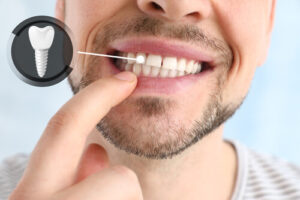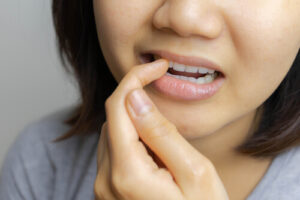The implant healing abutment is essential in the journey towards achieving a fully functional and aesthetically pleasing dental implant. As the bridge between surgical placement and final restoration, these abutments are pivotal in guiding tissue healing and shaping the gum line around the implant.
This article delves into the significance of implant healing abutment, its function in the dental implant process, and how it contributes to dental implants’ overall success and longevity. Join us as we discover the critical role of healing abutments in ensuring a seamless transition to a permanent solution for missing teeth.
Implant Healing Abutment: An Overview and Its Importance
The implant healing abutment is a critical component in implant dentistry, playing a pivotal role in the successful integration of dental implants with the patient’s gum and bone tissue. This essential element of denture guides the gum tissue, promoting proper healing around the implant and setting the stage for the placement of the final restoration. Healing abutments are designed to support and shape the soft tissue, ensuring the gum contours properly around the implant for a natural and aesthetically pleasing outcome. Their use is a testament to the meticulous nature of implant dentistry, where every step is carefully planned to enhance the longevity and functionality of the dental implant.
- Facilitating Soft Tissue Healing: Healing abutments aid in properly forming gum tissue around the implant, which is crucial for preventing complications such as inflammation or infection.
- Preparation for Final Restoration: By maintaining the space and supporting the gum, these abutments make the subsequent placement of the final crown, bridge, or denture more straightforward and predictable.
- Enhancing Aesthetics: Custom healing abutments can be used better to match the shape and contour of the natural tooth, significantly improving the final aesthetic result of the implant.
- Minimising Surgical Procedures: In many cases, a healing abutment eliminates the need for a second surgery to expose the implant after the gum has healed, streamlining the overall treatment process.
- Material and Design Considerations: Typically made from titanium, healing abutments are designed to be durable yet gentle on the surrounding soft tissue, contributing to a smoother healing process.
Understanding the Materials and Types of Implant Healing Abutments
Implant healing abutments are integral components in dental implant surgery, playing a vital role in facilitating proper healing and preparing the implant site for the final restoration. Understanding the materials and types of implant healing abutments is crucial for dental professionals and patients to ensure optimal treatment outcomes.
- Materials Used: Implant healing abutments are commonly made from biocompatible materials such as titanium or zirconia, ensuring compatibility with the surrounding tissues and minimising the risk of adverse reactions.
- Titanium Abutments: Titanium healing abutments are widely used for their excellent strength, durability, and biocompatibility. They provide reliable support during the healing phase and can be easily customised to suit individual patient needs.
- Zirconia Abutments: Zirconia healing abutments offer superior aesthetic outcomes compared to titanium, as they resemble natural tooth colour and clarity. While slightly less robust than titanium, zirconia abutments still provide adequate support during healing.
- Types of Abutments: Implant healing abutments come in various types, including straight, angled, and temporary abutments. Straight abutments are commonly used for implant cases, while angled abutments address anatomical challenges or aesthetic considerations. Temporary abutments are utilised when immediate restoration is desired, providing provisional support until the final restoration is placed.
- Custom Healing Abutment: Implant healing abutments can be customised in height, diameter, and emergence profile to achieve optimal soft tissue healing and aesthetic outcomes. This customisation ensures proper integration with the surrounding tissues and enhances the final restoration’s appearance.
- Hygienic Considerations: The design of implant healing abutments should also consider hygienic factors, such as ease of cleaning and maintenance, to minimise the risk of peri-implant inflammation and infection.
How Implant Healing Abutments Facilitate Optimal Gum Tissue Healing

Stabilisation of Gum Tissue
Implant healing abutments are designed to stabilise the surrounding gum tissue during the initial healing phase. By securely attaching to the implant fixture, they prevent the gums from collapsing into the implant site and help maintain the desired shape and contour of the soft tissue.
Promotion of Soft Tissue Attachment
The surface texture and contours of implant healing abutments are optimised to encourage the attachment and growth of soft tissue around the implant site. This promotes the formation of a stable and healthy soft tissue seal, which is crucial for preventing bacterial infiltration and maintaining the implant’s long-term stability.
Protection of Healing Area
Implant healing abutments act as protective barriers, shielding the underlying implant site from mechanical trauma and microbial contamination. This protection is particularly important during the early stages of healing when the implant is most vulnerable to external influences that could compromise its integration with the surrounding bone.
Enhancement of Blood Circulation
Implant healing abutments can stimulate blood circulation in the surrounding gum tissue, promoting faster healing and tissue regeneration. Enhanced blood circulation promotes the efficient delivery of oxygen and essential nutrients to the site of healing, expediting the repair process and diminishing the likelihood of complications.
Facilitation of Prosthetic Integration
By promoting healthy gum tissue healing, implant healing abutments create an optimal environment for the subsequent placement of the final prosthetic restoration. Well-healed gum tissue ensures proper emergence profile and aesthetics, enhancing the overall success and longevity of the implant-supported restoration.
Care and Maintenance Tips for Your Implant Healing Abutment

- Regular Oral Hygiene: Brushing and flossing around the implant healing abutment are essential for maintaining oral hygiene and preventing the accumulation of plaque and bacteria. Opt for a soft-bristled toothbrush and non-abrasive toothpaste to delicately clean the implant healing abutment and the adjacent teeth. Incorporate antimicrobial mouthwash into your oral hygiene routine to reduce the risk of infection.
- Avoidance of Hard Foods: Steer clear of hard or sticky foods to prevent placing undue stress on the implant healing abutment. Instead, choose softer food options and refrain from biting into hard objects to minimise the risk of damaging or dislodging the abutment. Stay mindful of your chewing behavior and avoid habits like nail biting or using your teeth for tasks other than eating to reduce unnecessary strain on the abutment.
- Regular Dental Check-ups: Arrange routine dental appointments with your dentist to oversee the healing process of your implant and verify the functionality of the healing abutment. During these visits, your dentist will evaluate the stability of the abutment and conduct any essential adjustments or maintenance tasks to enhance its effectiveness.
- Protection During Physical Activities: For individuals engaging in contact sports or activities with potential oral injury risks, it’s advisable to utilise a protective mouthguard to shield your healing implant abutment. Also, avoid habits like teeth grinding or clenching, as these can exert excessive force on the abutment and compromise its integrity.
- Prompt Reporting of Concerns: If you experience any pain, discomfort, or signs of inflammation around the implant healing abutment, contact your dentist immediately. Timely reporting of any issues enables prompt intervention and treatment, reducing the likelihood of complications and promoting the favorable outcome of your dental implant treatment.
In conclusion, implant healing abutment is a cornerstone in the success of dental implants, ensuring optimal tissue healing and preparing the site for the final restoration. Its role in shaping the gum line and facilitating the implant’s seamless integration into the patient’s oral cavity cannot be overstated. By understanding the importance and function of dental cement healing abutment, patients can appreciate the intricacies involved in their dental implant journey and look forward to achieving a restored smile and enhanced oral health.
Experience the difference with Digital Dental Surgery Sydney. Call us today at (02) 8294 5812 to schedule your consultation and know how our expert team can guide you through every step of your dental implant journey. Don’t delay – take the first step towards a healthier, more confident smile with Digital Dental Surgery Sydney.
References
Healing Abutment
https://www.icoi.org/glossary/healing-abutment/
Healing Abutment Distortion in Implant Prostheses: An In Vitro Study
https://pubmed.ncbi.nlm.nih.gov/35893453/
Immediate Implant and Customized Healing Abutment for a Periodontally Compromised Socket: 1-Year Follow-Up Retrospective Evaluation
https://www.mdpi.com/2077-0383/12/8/2783
Clinical Advantages of Immediate Posterior Implants With Custom Healing Abutments: Up to 8-Year Follow-Up of 115 Cases
https://www.sciencedirect.com/science/article/pii/S0278239122008242






